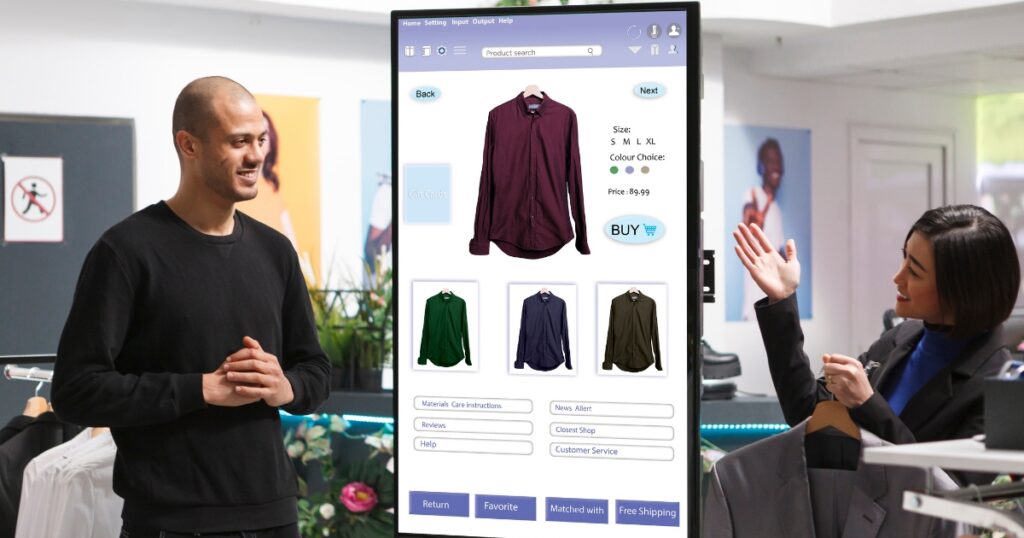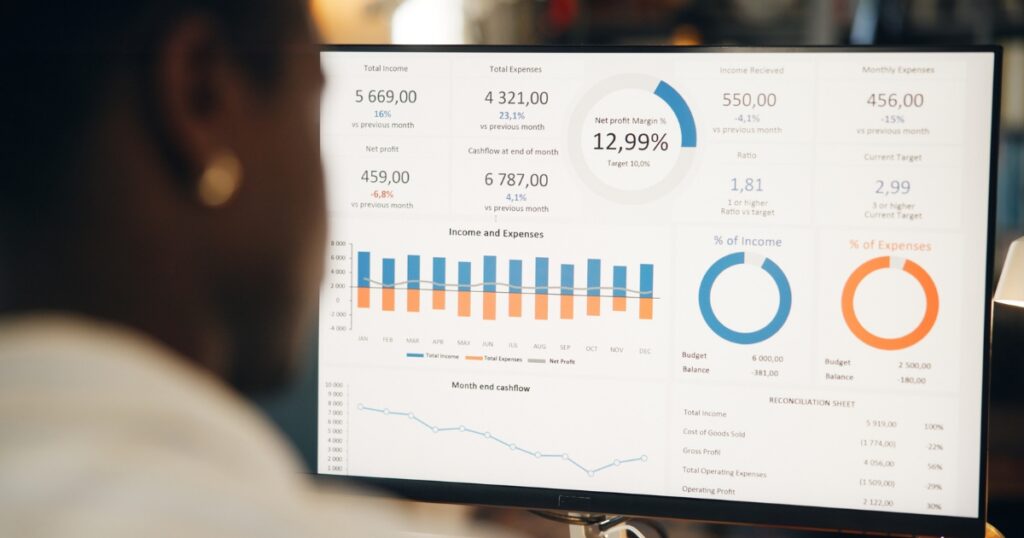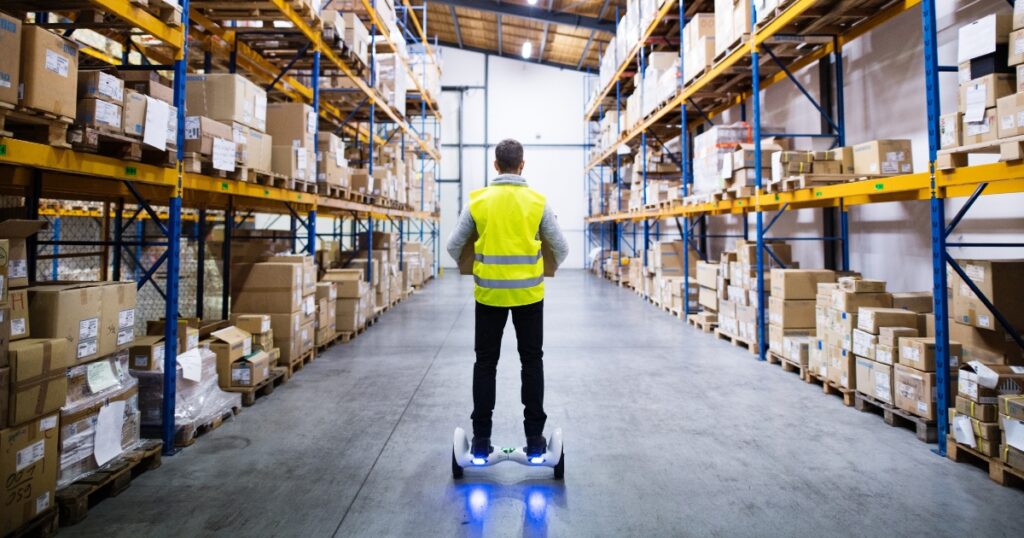If you run an online shop or a physical retail brand, you’ve probably noticed how fast the industry is changing. Shopping isn’t just about browsing shelves or scrolling product pages anymore — it’s about personalised experiences, faster delivery, and smarter recommendations. That’s why more businesses are exploring the Best AI Tools for Retail and eCommerce Growth to stay competitive.
Not long ago, only big companies like Amazon or Walmart could afford to build advanced AI systems. Today, thanks to accessible platforms like Planpost AI and other cloud-based tools, even a solo entrepreneur can tap into AI to create high-impact marketing campaigns, understand customers better, and compete on a global stage.
Why AI Matters for Retail & eCommerce
Here’s why this matters:
- The global eCommerce market is projected to exceed $8 trillion by 2027 (Statista).
- 73% of online shoppers expect brands to understand their needs and offer personalized recommendations (Salesforce).
- Businesses that use AI for product recommendations see 20–30% higher sales conversion rates compared to those that don’t.
This shift means AI is no longer optional — it’s a competitive advantage.
If you’re still relying on manual marketing, scattered tools, or guesswork for product recommendations, you’re likely leaving revenue on the table.
In this blog, we’ll break down:
- How AI is transforming the retail & eCommerce landscape.
- The key areas where AI makes the biggest impact.
- How platforms like Planpost AI simplify marketing, ads, and content creation for store owners.
- Practical steps to integrate AI into your business without needing a developer or a big team.
Think of this as your practical guide to thriving in the new age of AI-driven retail.

The Current Landscape – How AI Is Reshaping Retail & eCommerce
Just a few years ago, running an online store mostly meant uploading products, writing descriptions, and running a few ads.
But that old approach doesn’t cut it anymore. Shoppers today expect more:
- Recommendations that feel personal
- Fast responses to their questions — even at 2 a.m.
- Seamless delivery updates and easy returns
- Social media posts and ads that actually speak to them
Meeting all those expectations manually would require a huge team. That’s where AI comes in. It’s transforming nearly every touchpoint in the retail and eCommerce journey — not just for big brands but for small online shops as well.
Here’s how:
1. Personalised Shopping Experiences
AI tools analyse shopper behaviour — what they click, how long they browse, even what they add to (and remove from) their cart.
This data helps businesses show customers the right product at the right time.
For example, a fashion retailer can use AI-powered recommendation engines to suggest accessories that match the shopper’s outfit — just like a personal stylist.
This kind of personalisation used to be expensive to build.
Now, ready-to-use AI platforms make it affordable even for startups.
2. AI-Powered Advertising and Campaigns
If you’ve ever struggled with writing ad copy or picking the right images, AI tools have changed the game.
Platforms like Planpost AI can now:
- Generate ad copy and captions tailored to your product and audience.
- Suggest images or even create them automatically.
- Optimise campaigns for platforms like Meta and Google.
This means you can launch a full campaign in hours, not weeks — without hiring a big agency.
3. Smarter Customer Support
Chatbots and virtual assistants powered by AI now handle basic queries instantly, from “Where’s my order?” to “Do you ship internationally?”
This doesn’t just save time for business owners — it improves customer satisfaction because buyers get instant answers.
Even better, these tools can escalate complicated questions to a human agent, blending efficiency with a personal touch.
4. Efficient Inventory and Supply Chain Management
AI predicts stock needs by analysing buying patterns, seasonal trends, and even global shipping data.
This helps prevent two common problems:
- Overstocking (which ties up money in unsold goods)
- Running out of popular products at the wrong time
For example, an AI system might suggest ordering more holiday-themed items in advance based on previous years’ sales spikes.
5. Data-Driven Decision Making
Retailers and eCommerce brands now have access to real-time analytics powered by AI.
Instead of guessing which products or ads will perform best, they can rely on clear, data-backed insights.
This level of understanding used to be locked behind expensive enterprise software — now it’s available to small businesses too.
Key Takeaway:
AI is no longer a futuristic idea. It’s already embedded in the way successful stores market their products, talk to customers, and even manage their shelves.
If you’re not using AI yet, you’re competing at a disadvantage against brands that are.
Future Trends – Where AI in eCommerce Is Heading
If the current impact of AI on eCommerce is impressive, the future looks even more transformative.
In the next few years, retail won’t just be about buying and selling products online — it will be about building truly personalised, intelligent shopping journeys.
Here’s a closer look at the trends that will reshape the industry.
1. Hyper-Personalisation
Today, most online stores recommend products based on browsing history.
In the near future, AI will go much deeper — analysing things like:
- Customers’ location and local weather
- Social media activity
- Real-time buying intent
Imagine visiting an online shop for running shoes, and the AI immediately shows you products for your foot type, local climate, and preferred colour style.
Platforms like Planpost AI are already paving the way by helping retailers create personalised ads and posts that match customer behaviour.
2. Voice-Assisted Shopping
Voice assistants like Alexa, Siri, and Google Assistant are becoming more common in households.
AI will soon make it possible for customers to browse, compare, and order products entirely by voice.
Retailers who integrate with voice search early will be better positioned to capture this growing market.
3. AI + AR (Augmented Reality) Shopping
One of the biggest reasons shoppers hesitate online is the inability to “try” products.
AI combined with AR is solving this problem:
- A customer can virtually see how a piece of furniture looks in their living room.
- They can “try on” glasses or shoes using their phone camera.
Retailers that adopt these immersive technologies can reduce returns and boost customer satisfaction.
4. Predictive Shopping and Automated Orders
AI will soon be able to predict what customers need before they even search for it.
For example:
- Subscription eCommerce stores can pre-prepare shipments based on a customer’s previous buying cycles.
- Grocery apps could suggest a reorder list when your typical stock is running low.
This predictive approach will not only improve convenience but also lock in customer loyalty.
5. Smarter Ad Targeting and Campaign Optimisation
As privacy laws evolve, businesses will rely more on AI-driven predictive models to reach the right audience.
Instead of using third-party cookies, AI will analyse first-party data to optimise ad campaigns, lowering costs and increasing ROI.
6. Eco-Friendly and Sustainable Operations
AI will also play a role in making retail more sustainable.
For instance, predictive analytics can help reduce waste by ensuring only necessary stock is produced or shipped.
Retailers who combine AI-driven efficiency with sustainability messaging will win the loyalty of conscious consumers.
Key Benefits of AI for Retailers & Online Stores
Running a retail or eCommerce business has always been challenging — juggling marketing, customer service, product management, and inventory often feels overwhelming.
AI changes this by becoming a digital partner that works 24/7, helping you save time, cut costs, and boost sales.

Here’s a closer look at the biggest benefits:
1. Smarter Marketing Without a Big Team
Marketing often eats up the most time and budget for small businesses.
With AI-powered tools like Planpost AI, you can:
- Generate scroll-stopping social media posts in seconds.
- Write catchy ad copy and product descriptions.
- Produce videos and visuals tailored for each platform.
- Even identify your target audience automatically.
This means you no longer need a large marketing team or agency to launch effective campaigns.
Example:
A small fashion boutique can create a month’s worth of Instagram posts and Meta ads in less than an hour using AI.
2. Improved Customer Experience
Happy customers come back.
AI helps retailers deliver seamless experiences by:
- Offering personalised recommendations that feel curated.
- Providing instant chat support that answers common questions.
- Predicting what a customer might need next and suggesting it at the right time.
This kind of tailored experience used to be a luxury only big brands could offer — AI makes it accessible to everyone.
3. Higher Sales Through Data-Driven Insights
AI analyses browsing and buying behaviour to show you what’s really working.
Instead of guessing which products to promote, you get clear insights based on real-time data.
- Identify top-performing products
- See which ads drive the most conversions
- Adjust prices or bundles to match customer demand
This level of insight often translates into better conversion rates and higher revenue.
4. Cost Savings and Operational Efficiency
AI-powered automation reduces the need for manual work in areas like:
- Managing inventory
- Running repetitive ad campaigns
- Responding to basic customer inquiries
These efficiencies mean you can save money while freeing up time to focus on strategy and growth.
5. Scalability Without Growing Overheads
Scaling a traditional business usually means hiring more people.
With AI, you can serve more customers, run more campaigns, and expand to new markets — without increasing your fixed costs.
Example:
A small skincare brand can use AI to run targeted ads in multiple regions and languages simultaneously, something that would normally require a full in-house team.
How Planpost AI Helps Retail & eCommerce Businesses

Many retailers and online shop owners hesitate to adopt AI because they think it’s complicated or expensive.
The truth is, with tools like Planpost AI, you don’t need a developer or a big tech team — it’s designed for non-technical business owners who just want results.
Here’s how Planpost AI supports retail and eCommerce at every step:
1. Effortless Content Creation
Creating fresh content every day can feel endless.
Planpost AI can:
- Write product descriptions that highlight benefits, not just features
- Generate SEO-friendly blog posts to improve your search ranking
- Suggest captions for Instagram, Facebook, and TikTok that resonate with your audience
- Produce email newsletters for new arrivals, sales, or seasonal events
Imagine:
Instead of staring at a blank screen, you could draft a week’s worth of posts in minutes — and focus on running your shop.
2. Smarter Ads That Convert
Running ads often feels like gambling, especially if you’re not a marketing expert.
Planpost AI helps by:
- Writing ad copy that fits each platform (Facebook, Google, TikTok, Instagram)
- Suggesting audiences and keywords most likely to convert
- Analysing your ad performance so you can tweak campaigns quickly
Example:
A local boutique tested two ad styles generated by Planpost AI and found the one with AI-optimised messaging drove 40% more clicks.
3. Visuals & Videos That Sell
You don’t always need a photographer or video team.
Planpost AI can:
- Suggest visual styles for product shoots
- Generate promotional banners and ad graphics
- Create short-form video scripts or captions that make your clips engaging
This means you can keep up with fast-moving platforms like TikTok and Reels without draining your budget.
4. Predictive Insights for Growth
The built-in analytics help you understand:
- Which posts or ads perform best
- What time to post for maximum reach
- Which products to feature during upcoming seasonal peaks
You can make decisions based on data instead of guesswork — and that often means higher ROI and less wasted ad spend.
5. Accessible to Any Business Size
Whether you’re running a solo Etsy shop, a Shopify store, or a growing retail chain, Planpost AI scales with you.
- Solo sellers can use it to save time
- Small teams can use it to stay consistent and efficient
- Growing brands can use it to expand into new markets faster
Practical Steps to Start Using AI in Retail & eCommerce

Many business owners get excited about AI but feel stuck when it comes to taking the first step.
Here’s a simple, step-by-step guide to get started — no tech jargon, just clear actions.
Step 1: Identify the Bottlenecks
Start by asking:
- Where do you spend the most time?
- Which tasks feel repetitive or slow growth?
- Are you struggling more with content, ads, customer engagement, or analysis?
Example:
A small clothing boutique realised they spent 10 hours a week writing Instagram captions.
That became their first AI use case — freeing up time for product sourcing.
Step 2: Pick a Beginner-Friendly AI Tool
You don’t need a complicated system or a team of developers.
Choose an AI platform that is:
- Easy to learn
- Tailored for content, marketing, or eCommerce
- Offers templates for posts, ads, and emails
- Provides analytics so you can see what works
👉 Planpost AI is built exactly for this — designed for retailers, online sellers, and small businesses who want quick results without technical headaches.
Step 3: Start Small — Focus on One Task
Rather than overhauling your whole process, focus on one area where AI can show quick wins.
For example:
- Use AI for product descriptions first
- Or let it generate ad copy for a Facebook campaign
- Or test it for email marketing for your seasonal sale
Tip: Start with the task that takes the most time or generates the least results right now.
Step 4: Integrate AI into Your Workflow
Make AI a regular part of your routine, not just a one-off experiment.
- Draft your weekly posts in AI, then tweak them in your brand’s voice
- Use AI suggestions to decide when and where to post
- Track engagement data to guide future decisions
Over time, this will feel as natural as checking your inbox — but far more impactful.
Step 5: Analyse and Optimise
AI can give you insights, but you still need to guide it.
- Review which AI-created posts or ads perform best
- Double down on the formats, styles, and timings that work
- Continue testing — AI learns best from your feedback
Step 6: Scale When You’re Ready
Once you’ve seen real results in one area, expand AI into other parts of your business:
- Use it for seasonal campaign planning
- Experiment with AI-assisted visuals and video content
- Automate parts of customer support or FAQs
👉 This step-by-step growth ensures you see returns before investing more effort.

Future Trends of AI in Retail & eCommerce
The retail and eCommerce world is changing faster than ever.
AI is not just a nice-to-have tool anymore — it’s becoming the backbone of how businesses compete and grow.
Here’s what’s coming in the next few years that you should know about.
1. Hyper-Personalised Shopping
We’re moving from basic “you might also like” recommendations to truly personalised experiences.
- AI will use browsing behaviour, purchase history, and even real-time mood signals to offer highly customised suggestions.
- Imagine your customer opening your site and immediately seeing products that fit their style, size, and price range.
Story:
A small skincare shop used AI-driven product recommendations on their website.
Customers started seeing tailored kits for their skin type. Within six months, the shop saw a 28% increase in repeat orders.
2. Smarter Inventory & Supply Chain
Retailers often struggle with stock levels — either too much or not enough.
AI will predict:
- Which products will be in demand next month
- How seasonal trends affect stock
- When to reorder, so you never miss a sale or overstock
Big retailers like Amazon already rely on this.
In the future, these tools will be accessible even to small online stores through affordable AI platforms.
3. AI-Driven Customer Support
Chatbots are getting smarter.
Soon, AI won’t just answer basic FAQs — it will:
- Recommend products during live chats
- Handle refunds and exchanges automatically
- Offer personalised care (like remembering a returning customer’s past orders)
This means you can offer 24/7 support without hiring a large team.
4. Visual Search & AR Shopping
AI is making online shopping more immersive and intuitive.
- Customers can snap a photo of a product they like, and AI finds similar items in your store.
- Augmented Reality (AR) allows shoppers to “try on” clothes or see furniture in their homes before buying.
According to Shopify, stores using AR features reported a 94% higher conversion rate compared to those that didn’t.
5. AI-Based Dynamic Pricing
Expect to see more retailers using AI to:
- Adjust prices based on demand, season, and competitor activity
- Offer real-time discounts to close a sale
- Maximise profits without alienating loyal customers
6. Sustainability & Green Commerce
Consumers are increasingly eco-conscious.
AI will help businesses:
- Optimise delivery routes to cut carbon emissions
- Predict demand to reduce waste
- Suggest eco-friendly alternatives to customers
Brands that adopt AI-driven sustainability measures will gain trust and stand out in crowded markets.
7. Voice & Conversational Commerce
Shopping via smart speakers (like Alexa) or voice search is growing.
AI will make it seamless for customers to:
- Order repeat products with a simple voice command
- Get personalised suggestions during voice interactions
- Complete purchases hands-free

Conclusion
The retail and eCommerce industry is at an exciting turning point.
From personalised product suggestions to AI-powered logistics, the way businesses sell and the way customers shop are being reshaped every day.
Adopting AI is no longer just for the big players — small and medium businesses can now compete on the same level by using accessible tools that save time, cut costs, and improve customer experiences.
Key Points to Remember
- AI can optimise inventory, personalise experiences, and boost conversions.
- Tools for chatbots, AR shopping, dynamic pricing, and smart analytics are becoming more affordable.
- Retailers who act early will gain a competitive edge in the rapidly changing market.
- Future trends such as voice shopping, green commerce, and hyper-personalisation will drive long-term growth.
📣 Start Your AI Journey Today
The sooner you start exploring AI for your retail or eCommerce business, the sooner you’ll see the benefits.
Platforms like Planpost AI make it easier to:
- Create personalised content for your store
- Automate customer engagement
- Analyse data for smarter decisions
Don’t wait until your competitors outpace you — embrace AI now to grow and future-proof your business.
Read more:
The best AI tools include platforms for personalised recommendations, automated marketing, inventory management, chatbots, and data analytics.
Tools like Planpost AI help create targeted content and ads, while others like Clerk.io or Bloomreach support product recommendations and search.
AI can personalise shopping experiences by suggesting the right products, offering tailored discounts, and providing 24/7 customer support through chatbots.
This makes shopping more convenient and boosts customer loyalty.
Yes. Small businesses can use affordable AI tools to automate repetitive tasks, save time, and compete with bigger brands.
For example, tools like Planpost AI can generate social media ads, captions, and visuals without a dedicated marketing team.
Not necessarily. Many AI platforms, including Planpost AI, offer budget-friendly subscription plans.
These plans let small and mid-sized retailers benefit from advanced features like automated ad creation, analytics, and bulk content generation.
Start by identifying your biggest pain points — such as marketing, customer service, or inventory tracking.
Then choose an AI platform like Planpost AI that provides solutions for your priorities and is easy to integrate into your existing workflow.
